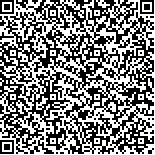下载中心
优秀审稿专家
优秀论文
相关链接
摘要

本文基于站点实测土壤温度和土壤湿度数据分析,发现温度指数TI(Temperature Index)和土壤冻融相变水量呈现幂函数关系,温度指数能够反映相变水量的变化。使用MODIS地表温度产品计算温度指数,在AMSR2卫星观测尺度上与相变水量建立了关系,从而对土壤冻融相变水量进行了降尺度研究。采用CTP-SMTMN数据采集仪观测网络上的站点观测到土壤水分对土壤冻融相变水量降尺度结果进行了验证。结果表明,土壤冻融相变水量降尺度结果与实测值较为接近,在土壤相变水量大于0.01(m3/m3)时,RMSE为0.0085(m3/m3),MAE为0.0059(m3/m3)。这种通过温度指数对土壤相变水量进行降尺度的方法具有简便,可行,可靠的优势,适合在冻融交替期计算较湿润土壤在冻融过程中产生的相变水量。同时,这种降尺度方法能够生成小尺度上的相变水量产品,实现了热红外遥感和被动微波遥感的优势整合,对研究地气水热平衡,气候变化,土壤冻结强度以及冻融侵蚀强度等具有重要意义。
The phase transition of pore water in soil during freeze-thaw process has a great impact on hydrologic cycle, meteorology and soil erosion on both regional and global scale. A useful indicator to evaluate the soil freeze-thaw intensity is the amount of Phase Transition Water Content(PTWC)in soil pores. However, the coarse resolution of passive microwave data(about 25 km)has limited availabilities for many applications in environmental monitoring. In this research, we attempted to obtain high resolution PTWC using MODIS and AMSR2 products. We analyzed the ground measured soil moisture and temperature data obtained in Tibet during the winter of 2012 and found that there was a power function relationship between Temperature Index(TI)and PTWC. Then a downscaling approach combining TI calculated by MODIS products and AMSR2 PTWC was performed to retrieve high resolution PTWC. A satifying result was achieved that the MODIS TI and AMSR2 PTWC also followed the power function trend with a R2 of 0.8068. The downscaling PTWC had more variation information and added the mission data of AMSR2 PTWC at 25 km. The downscaling PTWC at 1 km was validated with in situ data measured from November 2011 to March 2012 in CTP-SMTMN small scale area. The result showed that the downscaling PTWC was closer to the 1:1 line and it quite followed the trend of ground data with a RMSE of 0.0085(m3/m3)and MAE of 0.0059(m3/m3)when PTWC was higher than 0.01(m3/m3). But this method also has some disadvantages. The precision of AMSR2 soil moisture products directly influence the accuracy of the downscaling PTWC. At the same time, we use a power function to do the downscaling approach, the PWTC is increasing very quickly as TI decreasing when TI is near 0. A little change of TI may generate a large change of PTWC. The characteristic of power function may cause errors between retrieved and observed PTWC. In addition, the unmatched scale between the remote sensing pixels and in situ points, the spatial variability by factors other than LST such as soil initial moisture, soil texture, topography and vegetation may also generate errors. In the future research, we can improve the precision of downscaling PTWC by using a high precision soil moisture product, or developing a high accuracy algorithm to calculate PTWC. Introducing the topography, vegetation to the downscaling approach maybe also worth to try. In general, the TI-PTWC model in this research has combined the advantage of microwave remote sensing and thermal-infrared remote sensing; it has a high precision and can generate PTWC in small scale.

